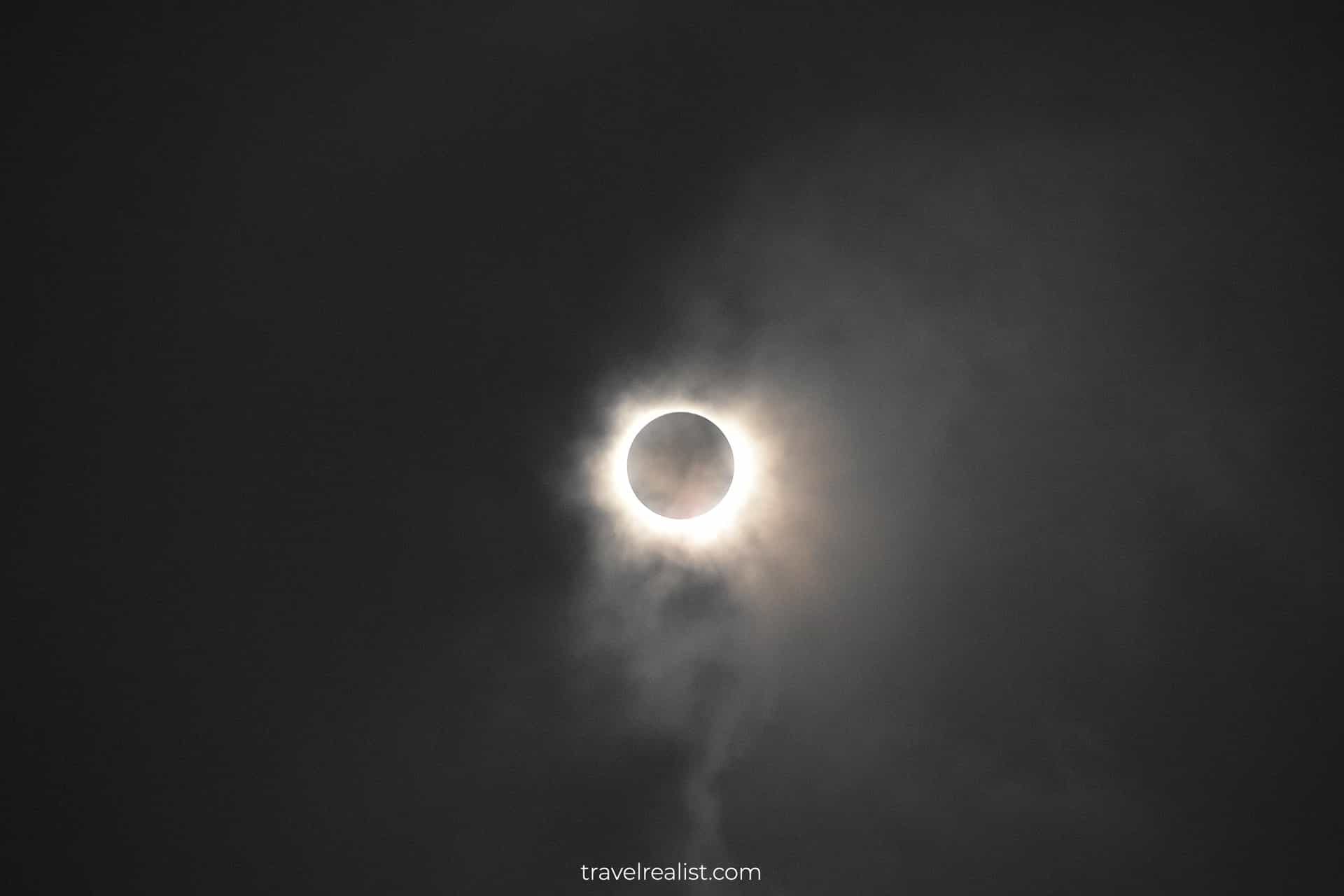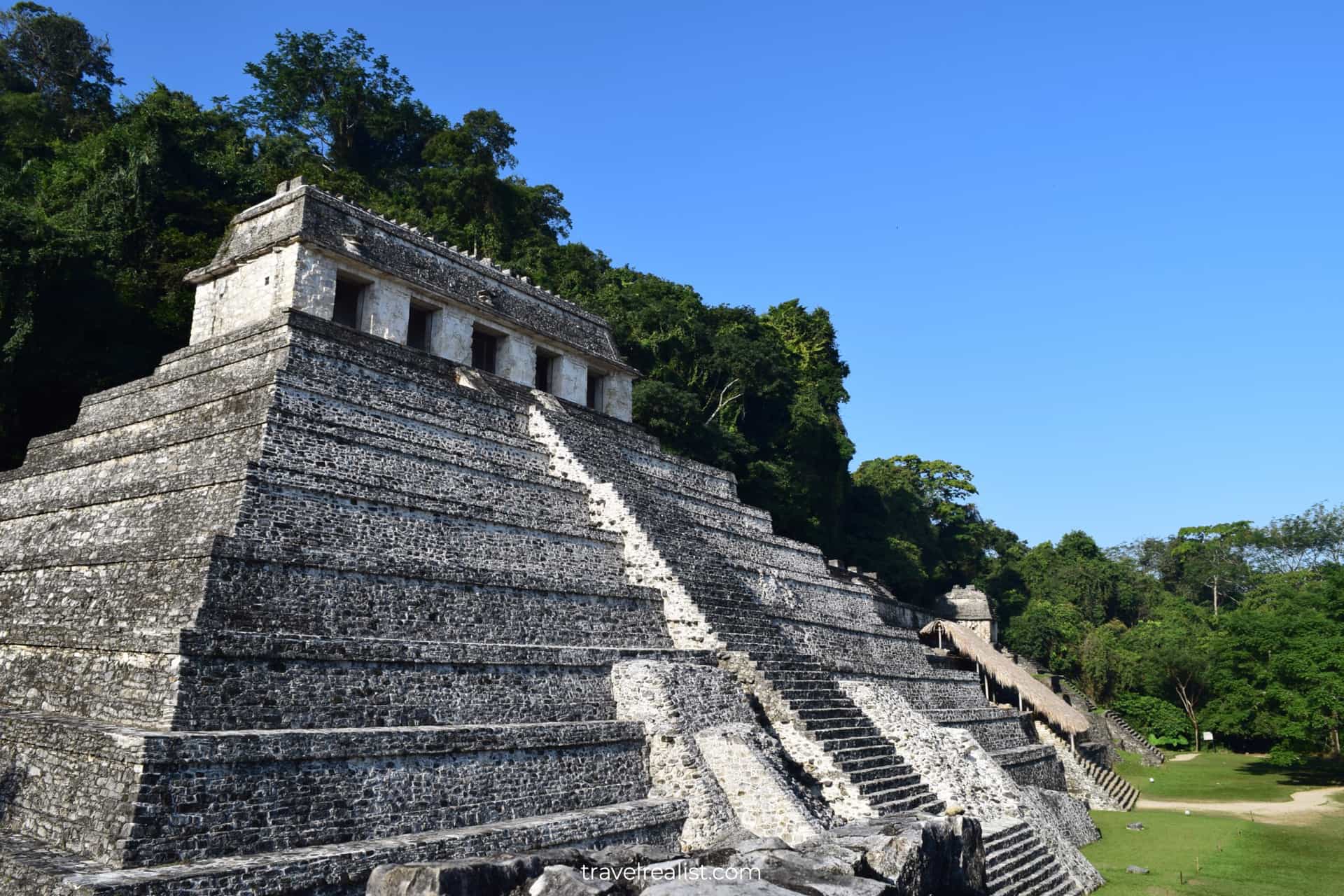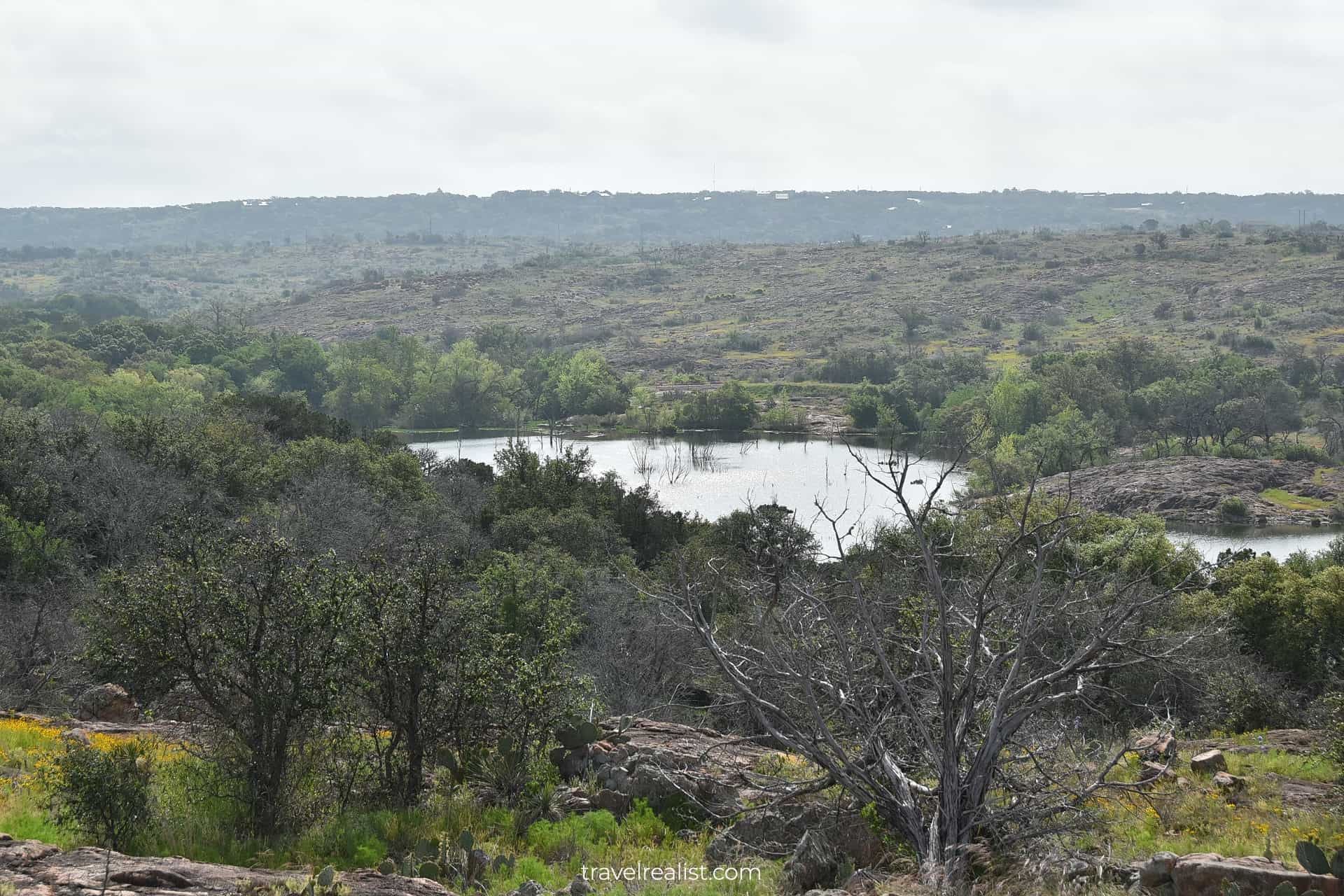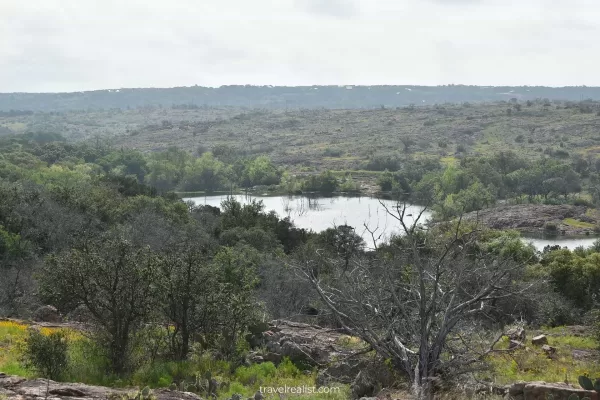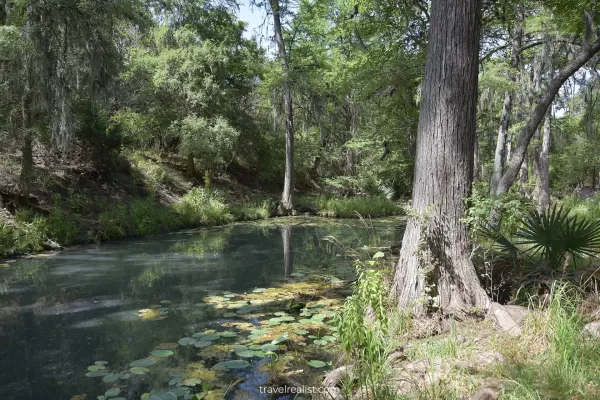Custer: Most Scenic Way to Travel in Black Hills
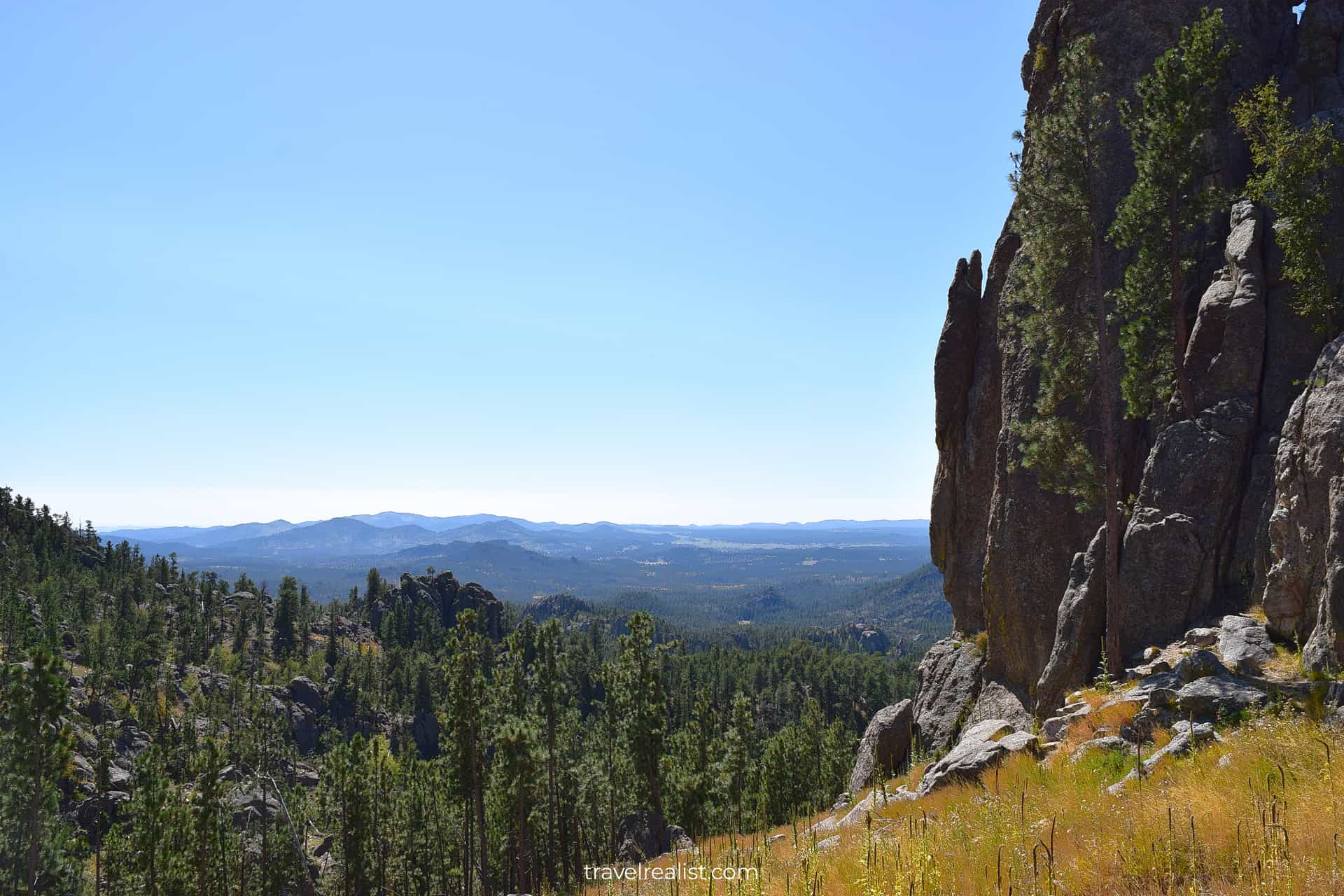
Custer State Park Guide
Use our realistic Custer Guide to plan your next adventure in this state park.
Custer State Park is a park in South Dakota known for scenic drives and wildlife spotting.
This post includes affiliate links that will earn us commission if you make a purchase via these links.
Sights & Places of Interest
Custer State Park is a paradise for scenic highway lovers. There are three scenic routes within the state park and one additional byway connecting them all:
- Needles Highway: a 14-mile (22-km) road with three tunnels, open summer only
- Wildlife Loop Road: a 18-mile (29-km) road, perfect for wildlife spotting
- Iron Mountain Road: a 18-mile (29-km) road, great for tunnel views of Mt Rushmore
- Peter Norbeck Scenic Byway: a 68-mile (109-km) highway that includes parts of several other roads; it is nearly impossible to take the park’s other scenic routes without driving on the Byway
This Custer State Park Guide follows our exploration path along these four scenic highways.
Needles Highway
The Needles Highway was the first scenic drive we took in Custer State Park. We entered the highway from the Peter Norbeck Scenic Byway and Crazy Horse Monument. The park’s entrance station is about 5 miles (8 km) southeast at the Sylvan Lake.
The Needles Highway derives its name from the needle shaped rock formations.
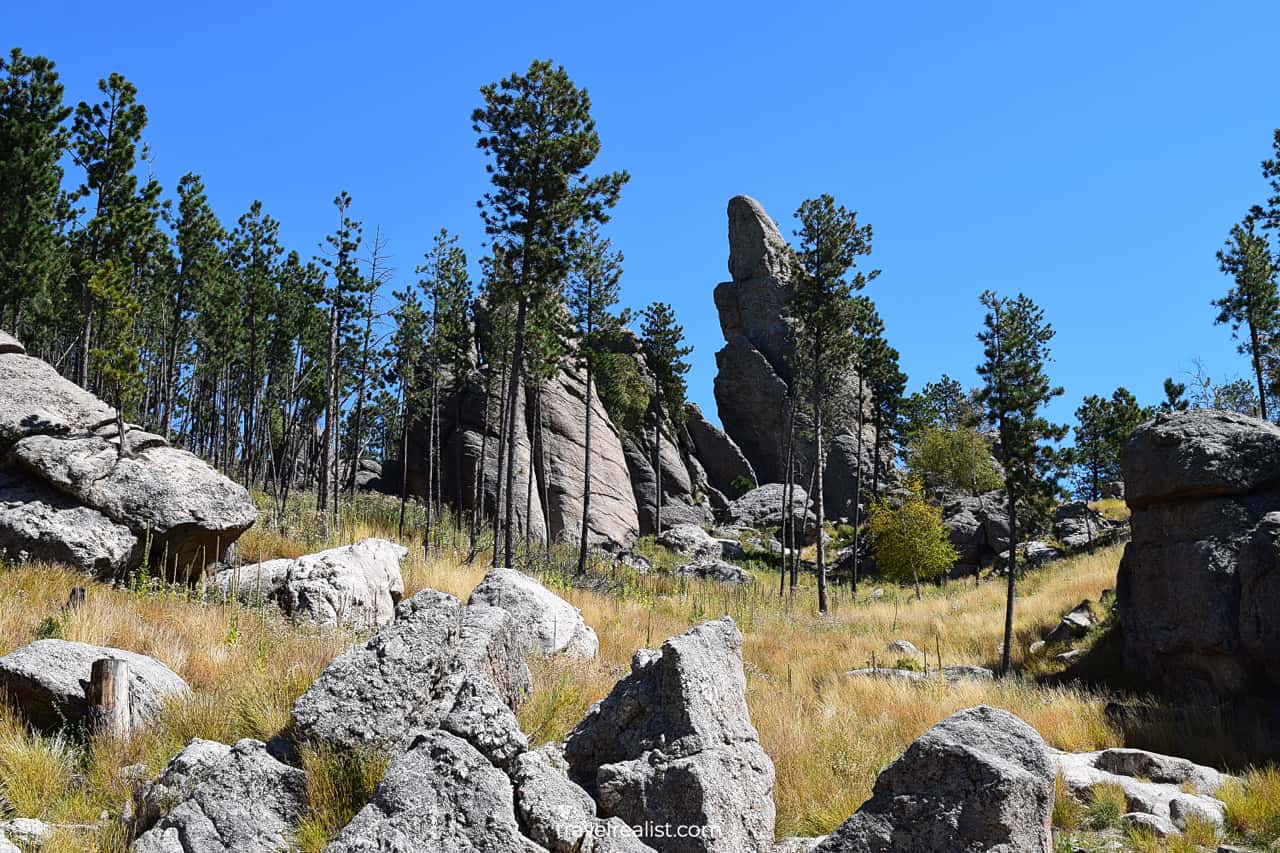
Needles Eye Tunnel
Three narrow tunnels are another signature feature of this highway. The Needles Eye Tunnel is the narrowest in the park. Its width is exactly 8 ft (2.4 m). Get ready for a thrilling drive through the eye of a needle.
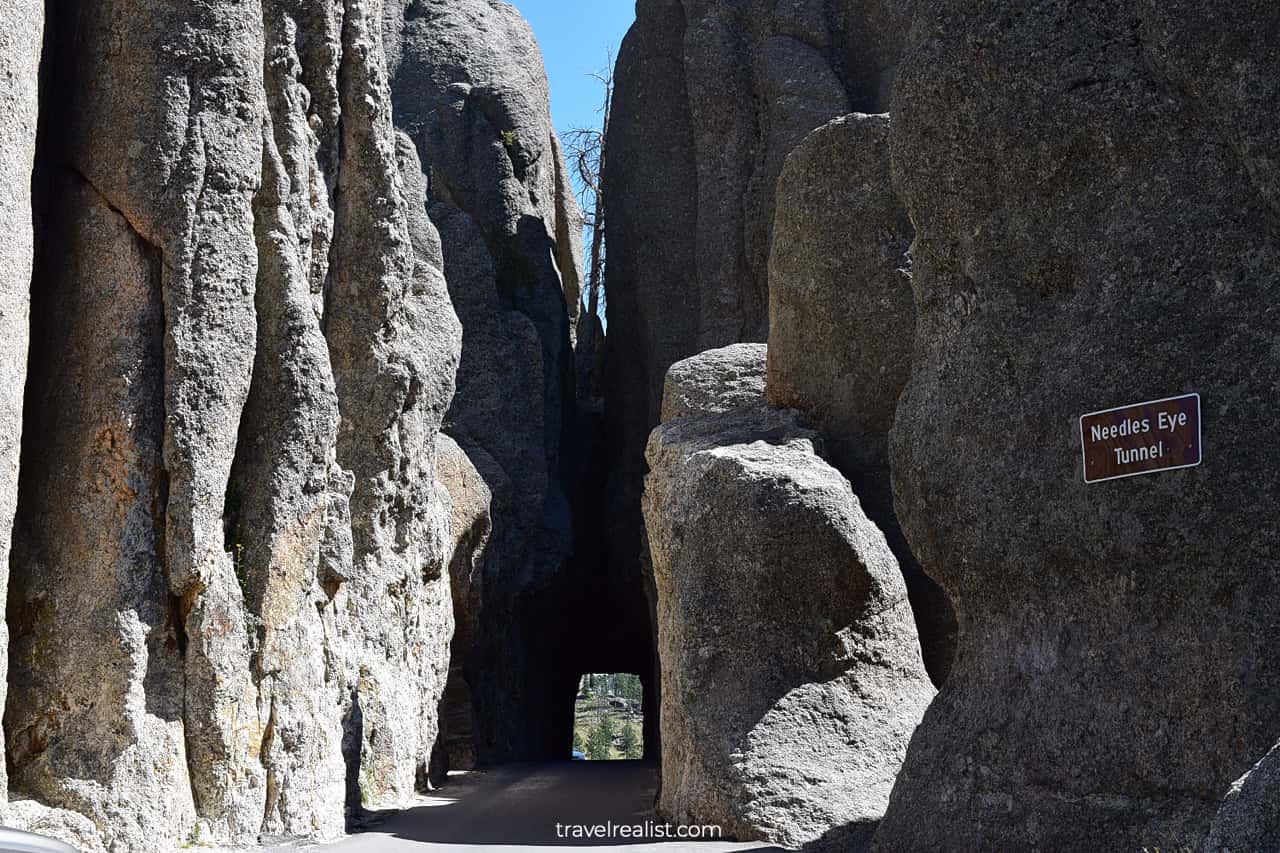
Needles Highway Scenic Overlook
There are overlooks on both sides of the tunnel. The eastbound overlook offers fantastic views of the Black Hills.
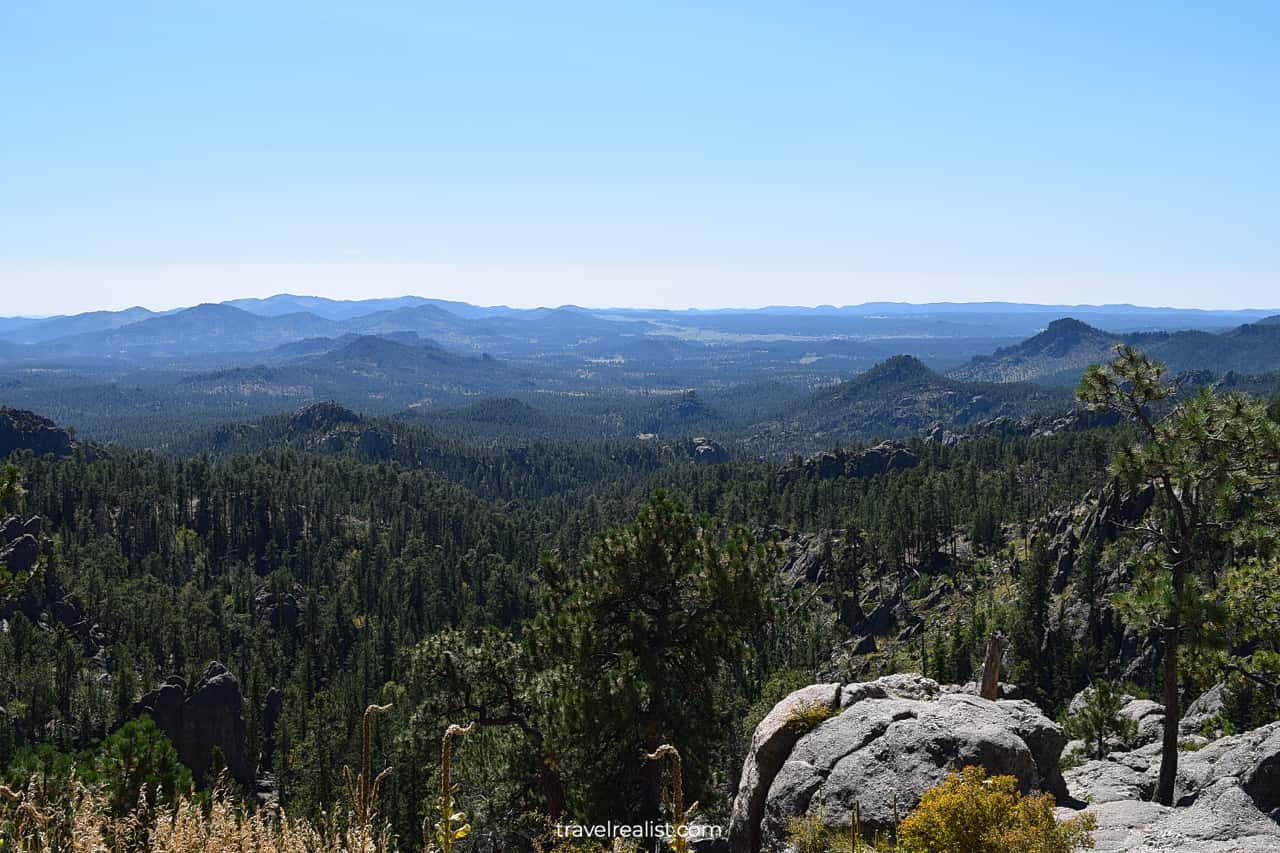
Needle like boulders, pines, and hills make a picturesque combination. The views serve as a great reward for a nerve-racking drive through the tunnel.
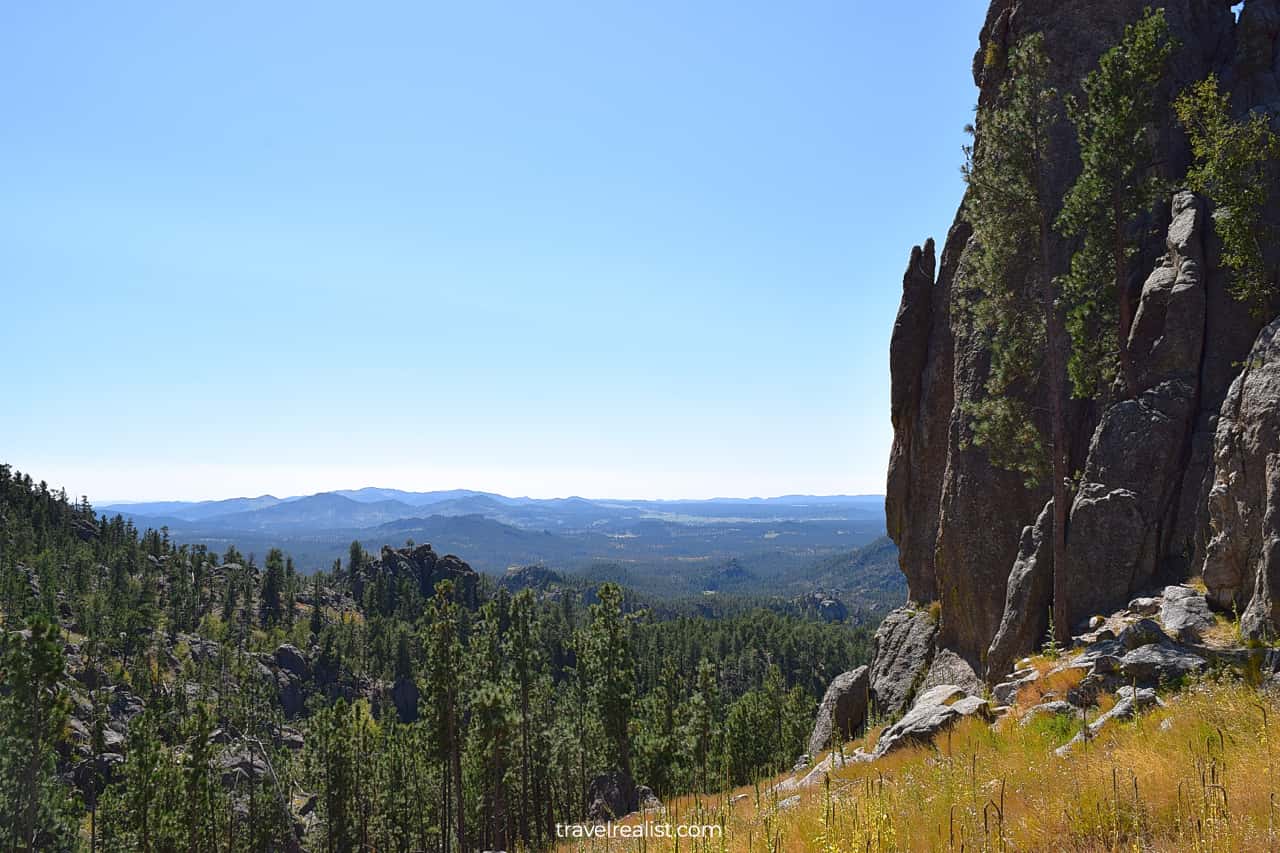
Cathedral Spires Pullout
There are a handful of other overlooks on the Needles Highway. The Cathedral Spires Pullout and Trailhead, Iron Creek Tunnel, and Hole-in-Wall Picnic Area are worth a quick stop.
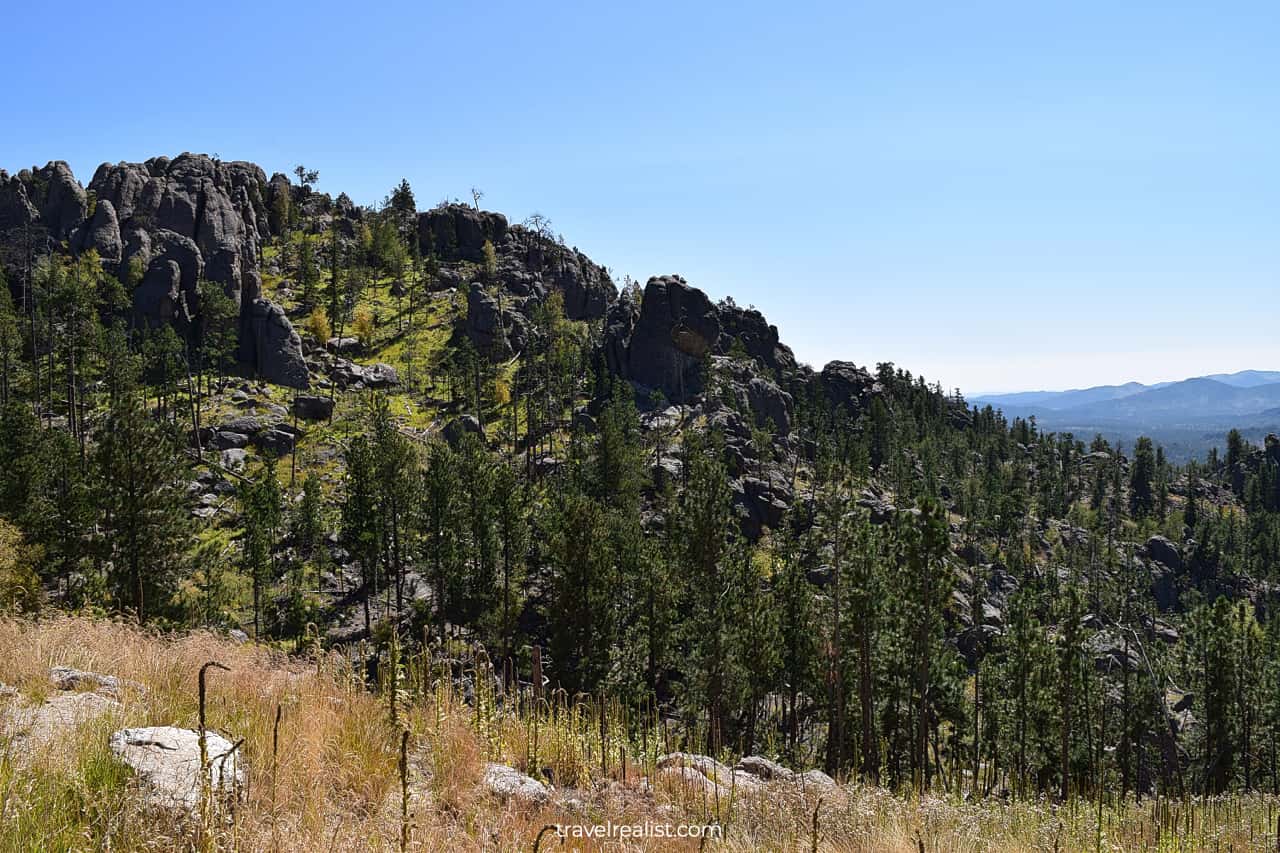
The terrain flattened as we returned to the Peter Norbeck Scenic Byway. These foothills meadows are a prime spot for wildlife encounters. Be on the lookout, particularly at dusk and dawn. Even if you see no animals during the day, you can still admire the saturated colors of these summer meadows.
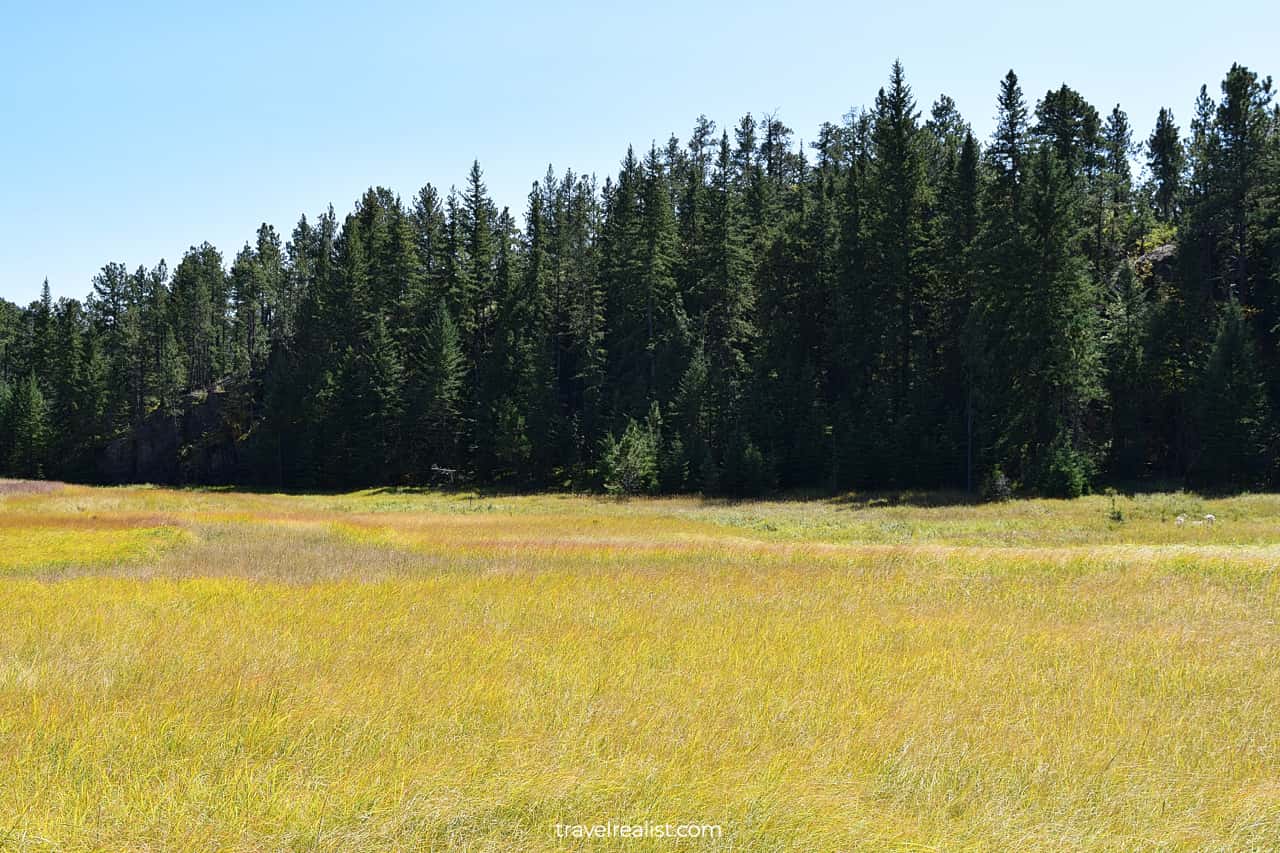
Wildlife Loop Road
The Wildlife Loop Road was our next scenic drive in Custer State Park.
Heddy Draw Overlook
Even State Highway SD-87 that connects the Peter Norbeck Scenic Byway with the Wildlife Loop Road is picturesque. Therefore, it is a good idea to stop at Heddy Draw Overlook to get another view of the Black Hills.
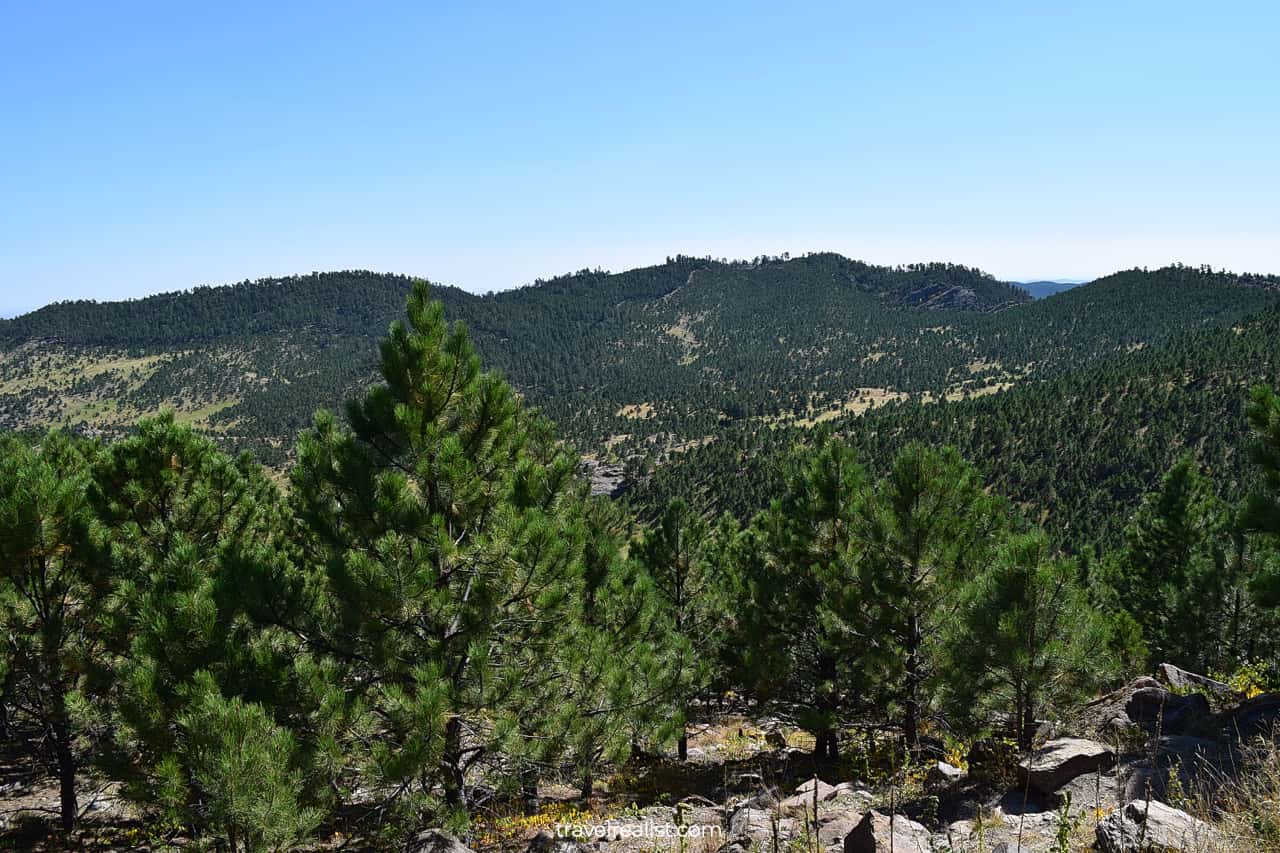
Wildlife Spotting
The Wildlife Loop Road lived up to its name. A large buffalo herd was our first wildlife encounter in Custer State Park. You are almost certain to see one of the 1,450 buffaloes, or bisons in the park.
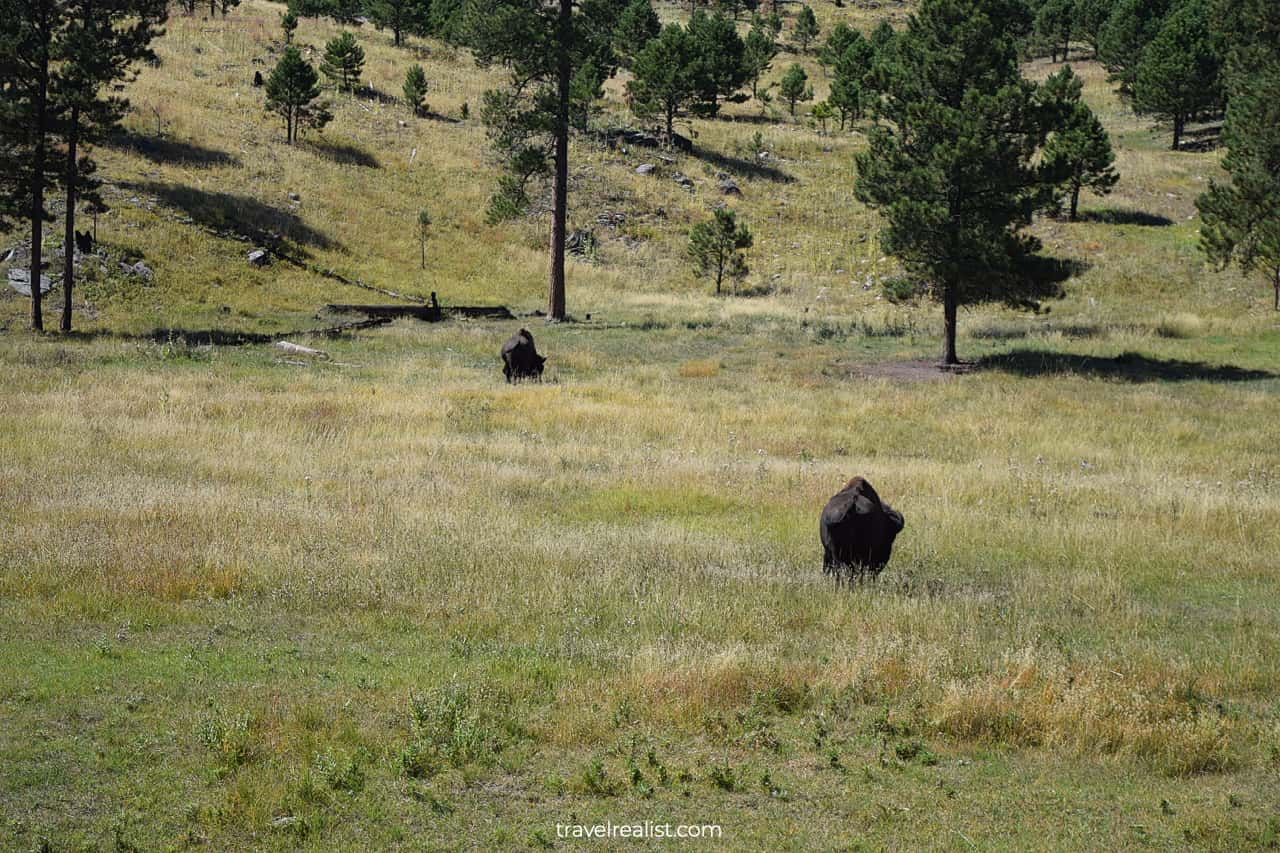
We nearly missed slightly less common animals just a few minutes later. Pronghorns, or antelopes, were resting next to the road. These animals skillfully blend into the background.
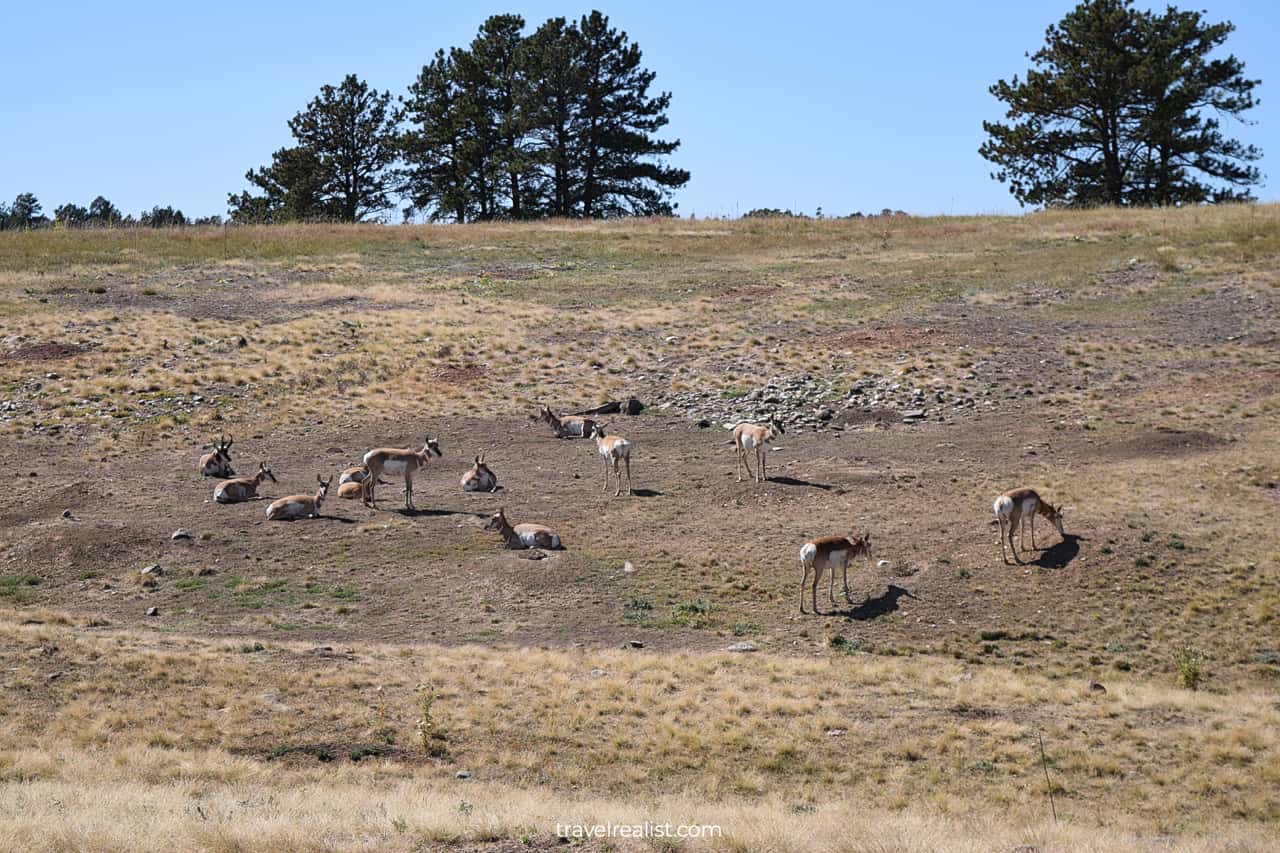
There were also a couple of burros and countless prairie dogs along the Wildlife Loop Road. If you are lucky, you could spot bighorn sheep, elks, mountain goats, and deer.
Iron Mountain Road
The Wildlife Loop Road returns to the Peter Norbeck Scenic Byway. After just a couple of miles (kilometers) we started the third scenic drive in Custer State Park.
The Iron Mountain Road (US-16A) is a winding mountain road. The drive features three tunnels, Scovel Johnson, C.C. Gideon, and Doane Robinson.
The last tunnel provides distant but scenic views of Mount Rushmore. Check that there is no oncoming traffic when taking pictures of Mount Rushmore through this tunnel.
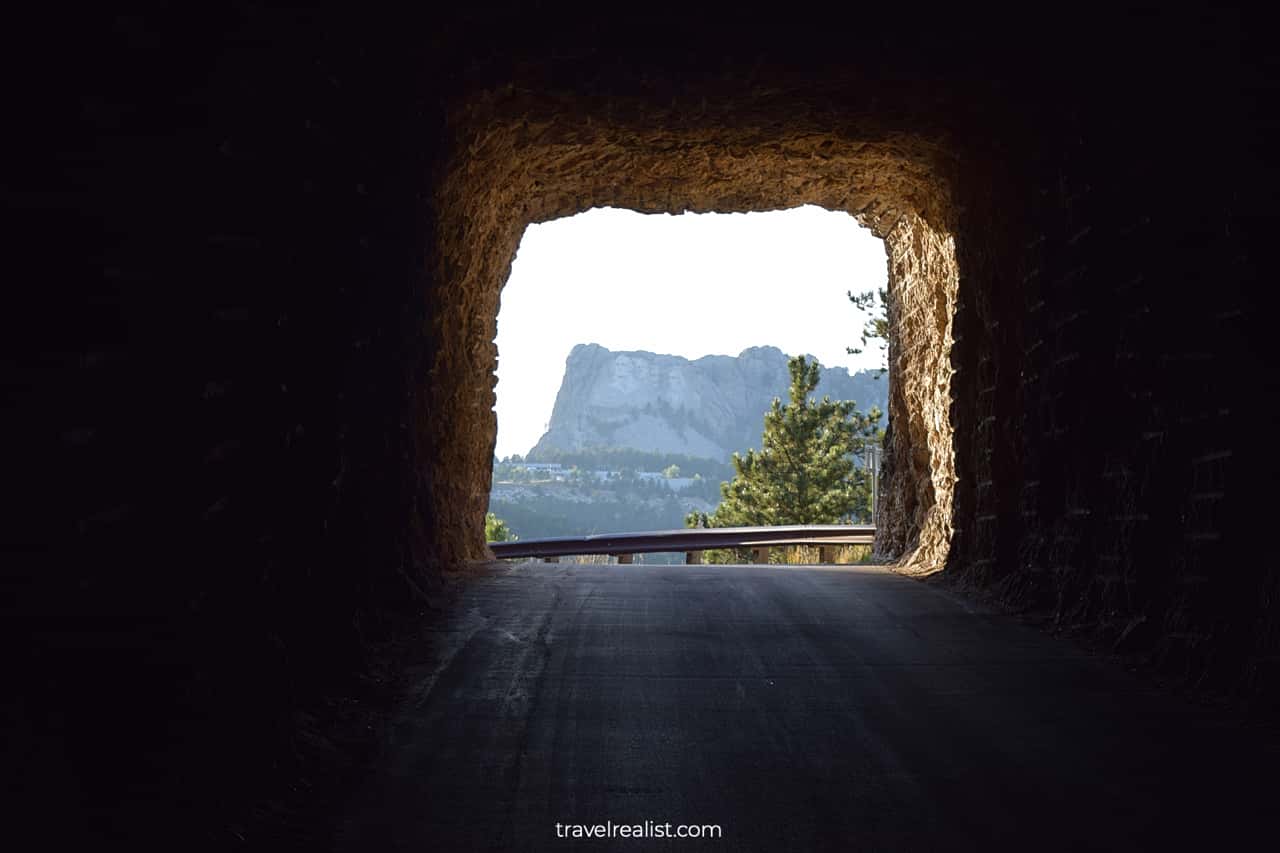
Peter Norbeck Scenic Byway
The northbound Iron Mountain Road brought us to the Peter Norbeck Scenic Byway (SD-244) for the fourth and last time that day.
This Scenic Byway acts as an excellent connector between Custer State Park’s other scenic drives. It is also the fastest way from Jewel Cave National Monument to Mount Rushmore National Memorial.
Mount Rushmore National Memorial
The Peter Norbeck Scenic Byway is also home to several overlooks of Mount Rushmore National Memorial. Unfortunately, most of these overlooks provide obstructed views. But there is a way to get a good view and avoid paying the Memorial’s parking fee.
Continue driving on State Highway SD-244 southbound past the Memorial’s entrance. The Mount Rushmore Profile View provides a good look at the President George Washington’s sculpture.
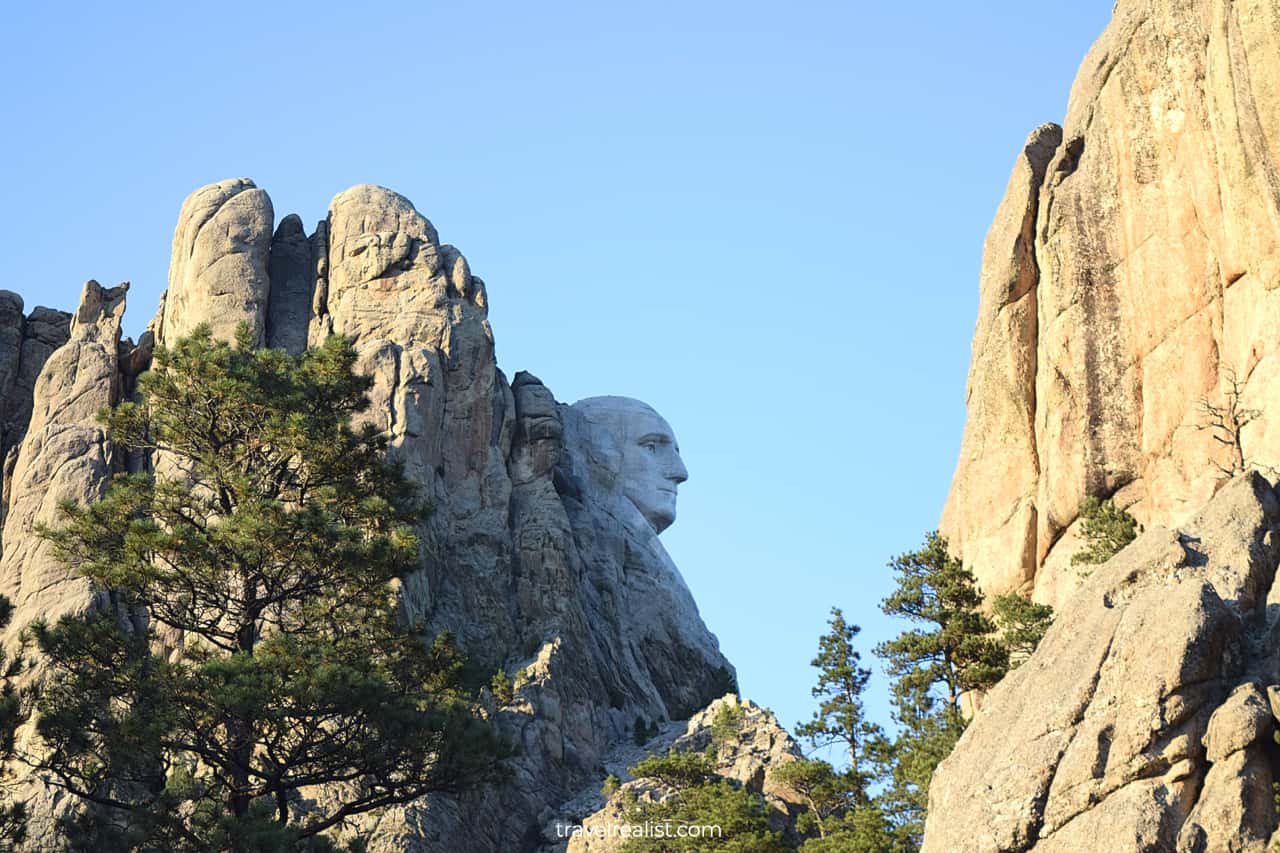
Continue with our Custer State Park Guide to learn more about ways to get to the sights, entrance requirements, and places to stay.
Getting to Custer State Park
Custer State Park is in the Black Hills region of South Dakota. The park offers an alternative, scenic route to travel between the region’s sights. Most of the park’s scenic drives would take longer than other available routes.
And you would have to really push your map or navigator to take the scenic drive. See this custom map’s route that connects Jewel Cave, Wind Cave and Mount Rushmore via Custer State Park’s scenic drives.
Where to Stay
Custer State Park is right in the middle of Black Hills. There are lots of places to stay near the park. You can find a hotel or a vacation rental in Custer, SD or Keystone, SD. A slightly longer drive to Hill City, SD or Three Forks, SD is also not out of question. And, for even more options, you can continue to Hot Springs, SD or Rapid City, SD.
Entrance Requirements & Passes
Custer State Park is open 24 hours a day, every day of the year. However, summer and fall are best times to visit if you would like to spot wildlife. We visited Custer State Park during our summer trip to the Black Hills region.
Both Custer State Park and Mount Rushmore National Memorial charge fees:
- Custer: $20 per vehicle per week
- Mount Rushmore: $10 parking fee not covered by annual pass
Custer State Park accepts credit cards. But you might want to pay the fee in cash in case the slightly outdated pay terminals do not work.
Custer State Park publishes a comprehensive map and guide for download. There is a new guide every year. It is a great source of information on the park’s history, scenic drives, trails, and wildlife.
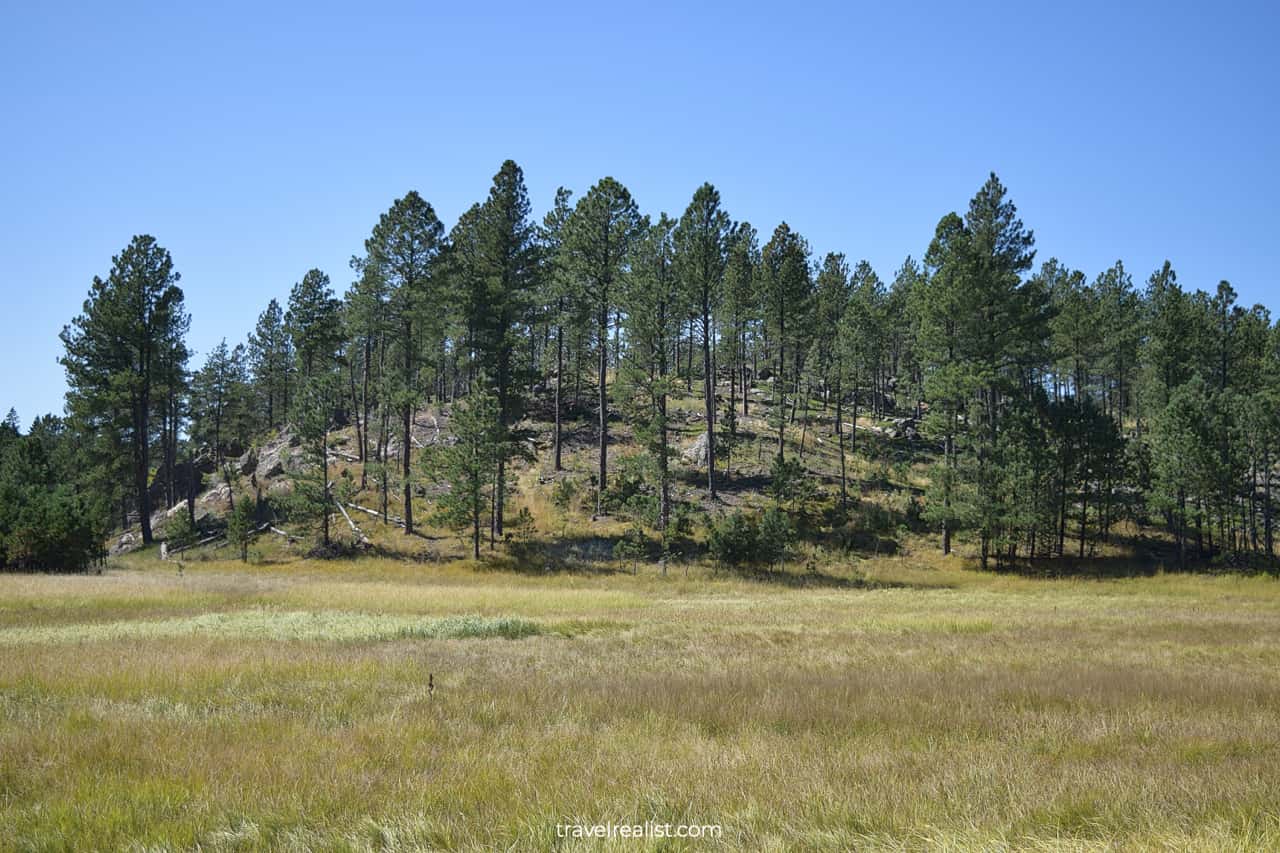
Takeaways: Custer State Park
Custer State Park is a nice park to visit if you have a few hours to spare. Scenic drives, overlooks, and wildlife spotting speak in favor of spending $20 to visit the park. However, if you have already seen buffaloes, pronghorns, and burros elsewhere, you might find the park’s value proposition less enticing.
There are other spots to see wildlife outside of the Wildlife Loop Road. State Highway SD-87 towards Wind Cave has a corridor where wildlife encounters are common and free.
In this case, the narrow tunnels on the Needles Highway and Iron Mountain Road are the only unique experiences on the scenic drives. Unless your route works out, it might not be worth it to go out of your way to drive on these scenic drives.
Take a look at our Custer State Park Video Guide and visit our YouTube channel for the latest videos.
Frequently Asked Questions
Custer State Park offers a scenic alternative to more efficient routes between Jewel Cave National Monument, Wind Cave National Park, and Mount Rushmore National Memorial.
You also could see buffaloes, pronghorns, burros, prairie dogs, and other wildlife.
However, the park might not be worth a detour if you have a long drive ahead.
You can explore Custer State Park in about half a day. You will spend most of the time driving on its scenic highways, enjoying overlooks, and spotting wildlife.
You can visit Custer State Park, Mount Rushmore, Crazy Horse, Jewel Cave, and Wind Cave in one day. You just need to secure advance reservations to both caves and plan your route in advance.
You have to pay a $20 fee per vehicle to drive through Custer State Park.
Late summer and early fall are best time to visit Custer State Park. Your chances to spot wildlife are higher during these seasons.
Dusk and dawn are best times to see wildlife in Custer State Park.
Custer State Park has three scenic highways and a byway that connects them all:
– Needles Highway: 14 miles
– Iron Mountain Road: 18 miles
– Wildlife Loop Road: 18 miles
– Peter Norbeck Scenic Byway: 68 miles
There is a $10 parking fee to see Mount Rushmore National Memorial. The annual pass does not cover this fee.
Safe realist travels!

